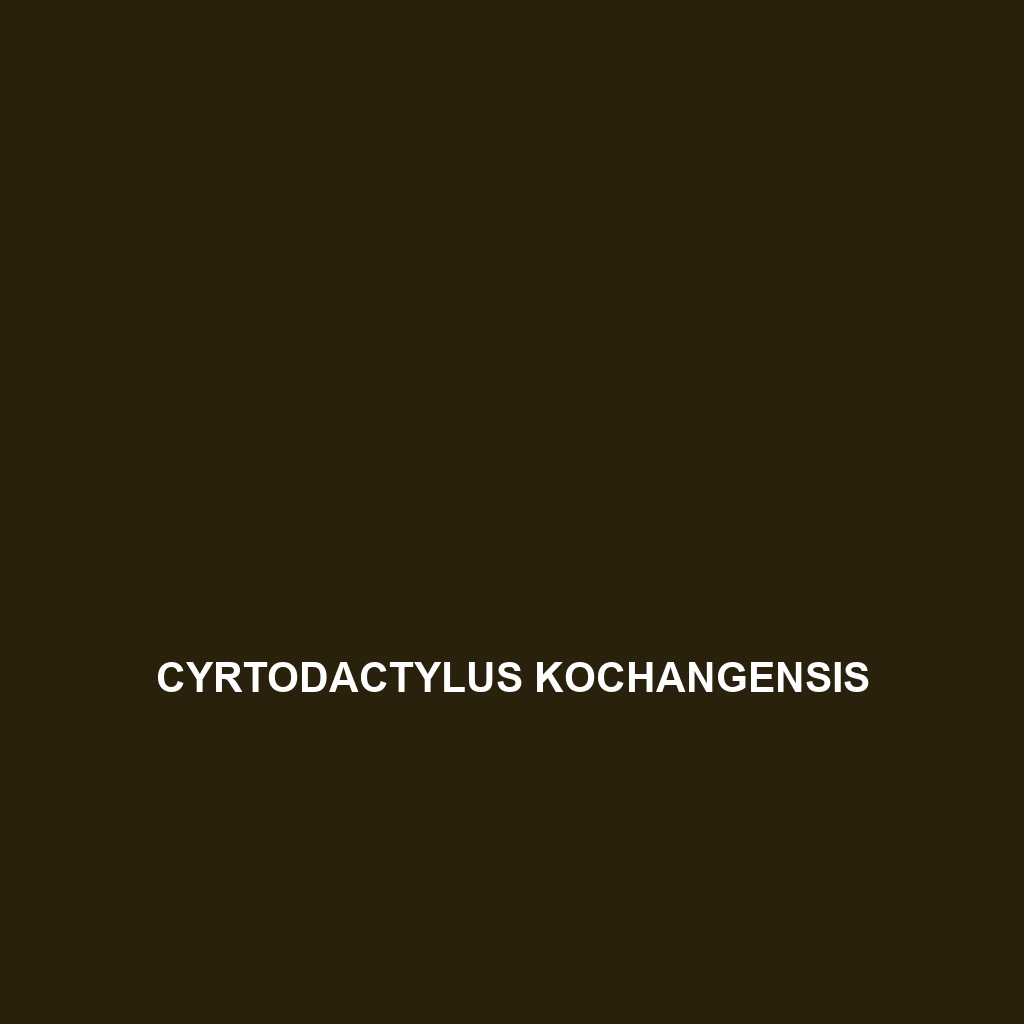Cyrtodactylus kochangensis
Common Name: Cyrtodactylus kochangensis
Scientific Name: Cyrtodactylus kochangensis
Habitat
Cyrtodactylus kochangensis is primarily found in the tropical forests and limestone caves of Southern Thailand and surrounding areas. This species thrives in humid environments, often residing in rocky outcrops and dense foliage, which provide both shelter and hunting grounds. Its habitat preferences make it endemic to specific geographical locations, favoring microhabitats that offer adequate moisture and cover.
Physical Characteristics
Cyrtodactylus kochangensis typically reaches a length of approximately 10 to 15 cm, featuring a slender body with a unique color pattern that varies from pale brown to dark gray. Its skin exhibits intricate patterns often resembling the rocky environment, which serves as camouflage against predators. Notable features include its elongated toes with adhesive pads that aid in climbing and grasping surfaces. These lizards possess large eyes with vertical pupils, enhancing their night-vision capabilities.
Behavior
This species demonstrates primarily nocturnal behavior, becoming active during the night to hunt for prey. Cyrtodactylus kochangensis has been observed exhibiting solitary behavior, though they may occasionally share the same habitat with conspecifics. Their agile movements and ability to cling to vertical surfaces make them effective hunters, allowing them to navigate through their arboreal and rocky habitats with ease.
Diet
Cyrtodactylus kochangensis is an insectivorous lizard, with a diet consisting mainly of crickets, moths, and various other small invertebrates. They employ a sit-and-wait approach, using their excellent camouflage to ambush unsuspecting prey. The lizard’s feeding habits highlight its role as a natural pest controller within its ecosystem.
Reproduction
The reproductive habits of Cyrtodactylus kochangensis are characterized by seasonal breeding, often occurring during the wet season when environmental conditions are most favorable. Females lay 2 to 4 eggs in secluded areas, which they incubate until hatching. The young are independent at birth, showcasing immediate adaptations for survival in their native habitat.
Conservation Status
Currently, Cyrtodactylus kochangensis is listed as vulnerable due to habitat loss and degradation caused by deforestation and urbanization. Conservation efforts are essential to protect this species, as it plays an important role in maintaining the ecological balance in its native environment.
Interesting Facts
Cyrtodactylus kochangensis is unique in its ability to change color slightly based on its surroundings, a characteristic that enhances its camouflage. Additionally, this lizard is relatively less studied, making it a subject of ongoing research and fascination among herpetologists.
Role in Ecosystem
Cyrtodactylus kochangensis plays a vital role in its ecosystem as a predator of small insects, contributing to the control of pest populations. Furthermore, it serves as prey for larger predators, thus being an integral part of the food web. Its presence indicates a healthy, balanced environment, and efforts to conserve its habitat benefit numerous other species within the same ecological niche.
